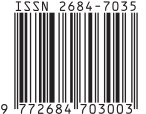KONDISI LINGKUNGAN FISIK RUMAH PENDUDUK DENGAN KEJADIAN KUSTA DI KECAMATAN JENGGAWAH KABUPATEN JEMBER
Abstract
Leprosy is a chronic infectious disease caused by Mycobacterium leprae. The prevalence rate of leprosy in Jenggawah subdistrict is the highest among others in Jember District (6,71/10.000). Several studies conducted showed a significant association between the risk of leprosy with the condition of the house. Good housing conditions are associated with reduced risk of leprosy. The aim of this research was to analyze the relationship between the physical environment of houses with the incidence of leprosy in Jenggawah, Jember District. The design of the research used in this study was case control. The independent variable in this study is the physical environment of the house, while the dependent variable was the incidence of leprosy. The number of cases in the study as many as 12 people and control as many as 24 people. Data analysis using Fisher's Exact test to determine the relationship of independent variables with the incidence of leprosy. The results using Fisher's Exact Test also showed that there was no relationship between ventilation, lighting, residential density, temperature, humidity, excreta disposal facilities, waste water disposal facilities, and garbage disposal facilities with the incidence of leprosy both the case and control groups (p>0.05). This is probably due to socio-economic conditions of both groups were homogeneous. In addition, the increase in public knowledge about leprosy and the concept of healthy homes also needs to be done.






